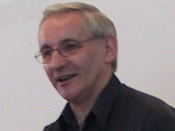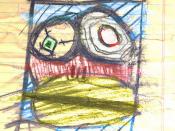1. INTRODUCTION
The act of plagiarism has been perpetrated by many students, journalists and writers over the past years. This essay aims to discuss plagiarism, starting with a definition and giving possible reasons as to why one may decide to plagiarise. It will then go on describe different types of plagiarism, making use of descriptions as provided by Professor Irving Hexham of the University of Calgary, and conclude my suggesting means by which one can identify and prevent plagiarism.
2. PLAGIARISM
2.1 Definition
According to Professor Irving Hexham (Internet Source, 2005), The Compact Edition of the Oxford English Dictionary describes the act of plagiarism as:
'the wrongful appropriation or purloining, and publication as one's own, of the ideas, or the expression of ideas of another.'
Intentionally trying to deceive the reader by presenting the work of another as one's own constitutes plagiarism, and academic plagiarism takes place when a writer continually copies, without using proper referencing techniques or quotation marks, 'more than four words from a printed source', and presents the work as his or her own (Internet Source, 2005).
Another form of academic plagiarism as cited by Hexham, is persistent paraphrasing. Although paraphrasing in itself is a constructive way to avoid plagiarism, continuous paraphrasing without the addition of the writer's own ideas and style will constitute plagiarism.
2.2 Reasons for plagiarism
While most plagiarism is deliberate, there are some cases where plagiarism is the result of poor referencing and a lack of understanding as to what actually constitutes plagiarism.
As mentioned by Hexham (Internet Source, 2005), plagiarism can be profitable and may increase the likelihood of 'employment', 'promotion' and 'regular salary increase'. More possible reasons for plagiarism are reported by Chip Scanlon (Internet Source, 2004), who sources part of an article published twenty years ago by David Shaw in...



Nicely written paper
The paper is nicely written and provides useful information on the subject.
2 out of 2 people found this comment useful.